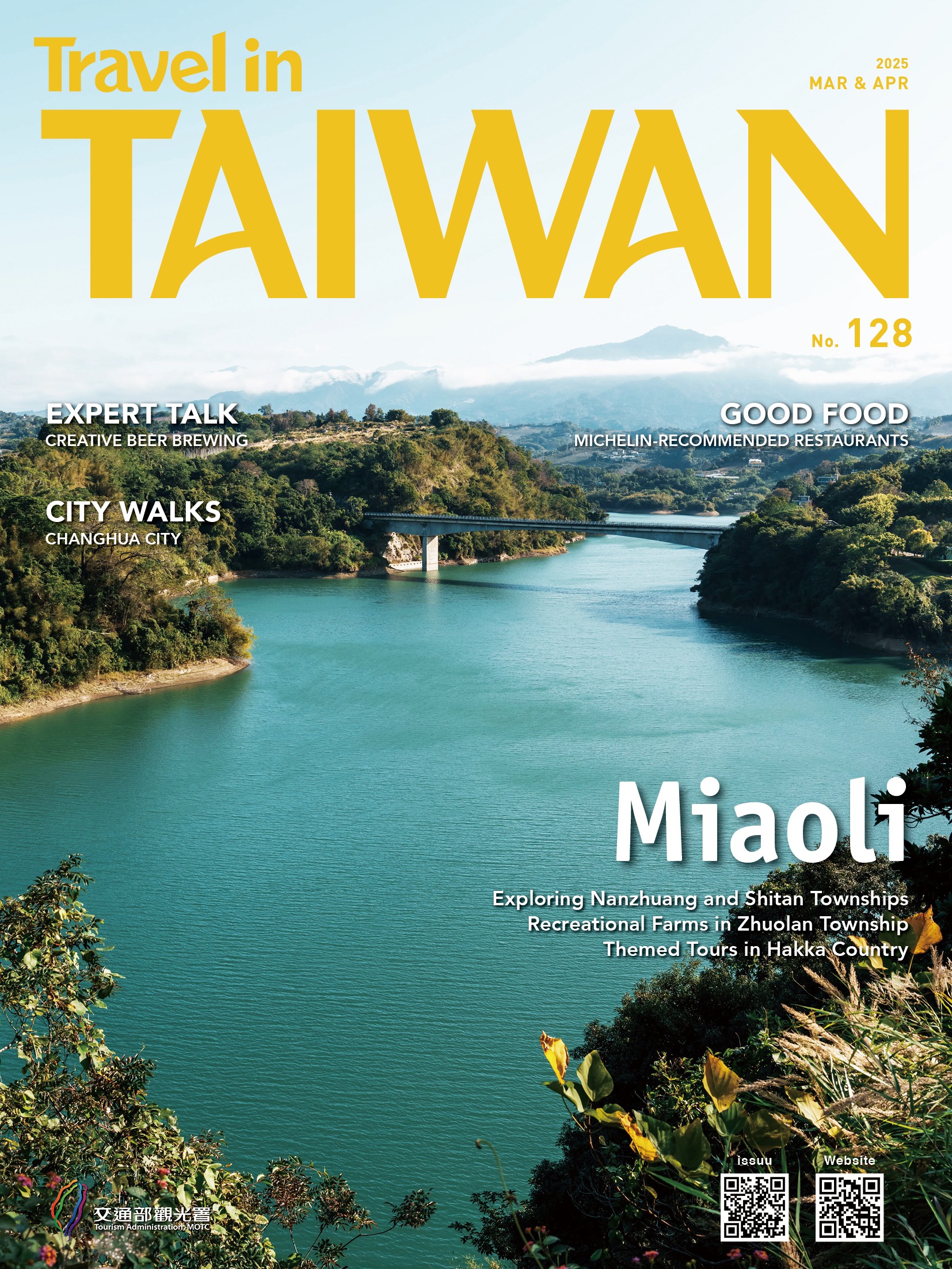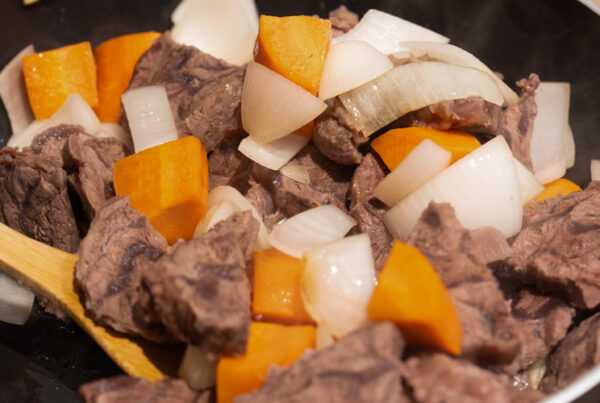Bando, Taiwan’s Unique Outdoor Banqueting Culture
TEXT / STEVEN CROOK
PHOTOS / MAGGIE SONG
Pop-up restaurants have been a thing for a decade or so in Taiwan, and open kitchens have been a popular draw since the late 1990s, making it possible for diners to watch as their meals are prepared. These trends enjoy high visibility in the island’s dynamic culinary scene, but visitors may be surprised to discover that one of the most distinctive local food traditions combines the mobility of pop-ups with the transparency of cooking where all can see.
Bando, a Taiwanese term which means “to set (or manage) tables,” describes a casual banquet held by a roadside, in a courtyard, or in another sufficiently large open space to celebrate an event such as a wedding, a housewarming, or a religious festival. Rather than looking for a suitable restaurant, many Taiwanese businesses also find it more convenient to celebrate the traditional pre-Lunar New Year shindig for employees (called a weiya) with a bando on the company premises. At many a bando there’s also a stage where musicians perform and speeches are made, and from which the hosts raise a toast to everyone in attendance.

Bando origins
Whether it’s a wedding or a weiya, the bando team will arrive at the venue (which could be a community hall, a parking lot, part of a school campus, or even a stretch of road) several hours before the meal. Having agreed with the client well in advance on an 8-, a 10-, or a 12-course menu, and on the number of tables to be served (generally 10 people per table), the head chef and his or her assistants then begin prepping. All the work is done beneath tarpaulins draped over a scaffold, while similar structures are set up to shelter diners from the elements. The entire kitchen and all the ingredients – as well as every pole, round banquet table, and chair – are brought to the site by truck.


The bando custom emerged long before the 1895~1945 period of Japanese colonial rule, back when Taiwan was a volatile frontier society awash with opportunities. According to food historians, feasts to which you invited your neighbors, or those who worshipped at the same temple, were a way new arrivals could establish and reinforce social networks.
All of Taiwan’s 21st-century presidents have celebrated their inaugurations by inviting supporters and notable citizens to bando banquets. On each occasion the menu has reflected the leader’s priorities, be it ethnic harmony, environmental protection, or food safety.
To better understand the bando phenomenon, I recently ventured to Qishan, a town that was incorporated as a district into Kaohsiung City in 2010, to meet up with Lu Zhao-hui and Li Chi-yu, a husband-and-wife bando team. Qishan, which is synonymous with the banana production that was launched in the 1960s and 1970s and enriched its farmers, is adjacent to Neimen, a rural district that has for generations produced some of Taiwan’s hardest-working bando crews.

Li’s grandmother, Li Zhang Jin-ye, was the first in the family to work as a bando chef. She was also a pioneer in a different sense: very few bando teams are led by women. Her son, Li Wen-zhan, expanded Neimen-based Xianglong Banquets – the family business that’s been going strong since 1953 – married, and fathered four daughters.
Li Chi-yu was the third child, and as it has turned out the only one to have developed an interest in a banqueting career. She met Lu, a native of Taoyuan in north Taiwan, while both were working in Taipei. Soon after getting married, the couple moved to Li’s hometown. Five years ago, they wholeheartedly embraced the itinerant lifestyle of bando professionals.
During her childhood Li helped her parents, so she was already well versed in the industry’s shortcuts and terminology. In south Taiwan, for instance, the middle-aged women who do much of the chopping, plating, and serving are known as chui kha (Taiwanese Hokkien for “water feet”). When you see them squatting down to scrub dishes using large metal basins, water splashing their toes, you’ll understand the name – and why they usually wear rubber boots.

Lu, for his part, was no stranger to the kitchen. Before getting married, his passion for cooking led him to take classes in French, Italian, and fusion cuisines. He says this knowledge was of little use when he started working at events catered by Xianglong, because many of the chopping and frying techniques are utterly different. But nevertheless he was soon hooked:
“I found it really interesting, and I think Taiwan is the only place where you can see bando culture.”
Because many Taiwanese are nowadays reducing their meat intake and avoiding oily foods, some bando chefs have expanded their repertoire. Non-Taiwanese elements such as sashimi, shabu-shabu, and kimchi now often appear on banquet tables.
Lu, by contrast, has moved in the opposite direction. Realizing that age-old recipes and culinary techniques might be lost as his father-in-law’s generation fades from the scene, he has tried to learn and preserve as much of this knowledge as he can. He’s now comfortable cooking well over 50 bando favorites. What’s more, he sees a place for bando in Taiwan’s growing cultural-creative sector.
Old-Time Favorites
Demand for bando has been declining for some time. Modern couples prefer to celebrate their nuptials with feasts in hotel banquet halls, and the custom of rotating banquets tied to the religious calendar has almost died out. Lu is therefore seeking new venues. “I’m trying to find a new business model,” he says. “I’m trying to build links with different industries. I want to attract young people, and show them what a traditional bando is, because many of them have no idea.”
He therefore cooks old-school dishes that tend to be rich and ornate. One of the 10 courses he served at an event in Qishan during my visit was Buddha Jumps Over the Wall, a banquet classic that has been served since before World War II. It’s a chicken-stock soup featuring spare ribs, bamboo shoots, chestnuts, quail’s eggs, mushrooms, thinly sliced pork, scallops, and a few other ingredients.

Other dishes that evening included red-braised eel served in a sweet-and-sour sauce awash with sliced bell pepper; crispy aromatic duck; a seafood-based geng (a starch-thickened soup somewhat like pottage or gumbo); black-boned chicken cooked with Cordyceps militaris fungus and ginseng; and sea cucumber cooked three-cup style with Pinellia pedatisecta (“three-cup” is a traditional Taiwanese stewing style using one cup each of soy sauce, rice wine, and sesame oil).


Lu occasionally uses a charcoal grill, but never an electric range. At the event in Qishan, all the cooking was done on three gas-fired portable stoves. Youfan, or “oily rice” (featuring slivers of seafood and julienned carrot), was steamed by stacking circular stainless-steel containers above a wok filled with boiling water. Ducks were deep-fried whole in large woks.


Bando have traditionally included a large number of fried dishes because, in the Taiwan of yore, cooking oil was too expensive for ordinary people to use on a daily basis. Most families subsisted on boiled and stewed dishes, and looked forward to special occasions when they could gorge on oilier, fattier, and saltier delicacies.
The crate of condiments Lu lugs to events provides some insights into how a bando chef gives his dishes flavor and texture. Like many Taiwanese cooks, he works with ginger, medicinal herbs, oyster sauce, black and white pepper, rice wine, salt, sesame oil (both black and white versions), sugar, soy sauce, and soy-sauce paste. But there are also a couple of items not usually associated with East Asian cuisines: ketchup and tapioca starch.



In certain respects, Lu’s approach is admirably modern. He refuses to cook shark’s fin for environmental reasons. To cut down on trash he doesn’t provide disposable cutlery, even though it means more washing up for his team. Surprisingly, he doesn’t cook any vegetarian dishes. If a client insists on a meat-free table or two, he partners with another catering outfit.
A successful bando operation requires much more than cooking skills and the ability to negotiate prices with clients. Scalability is also of great importance. The basic unit for a banquet chef is a table around which 10 people can sit. When Travel in Taiwan first met up with Lu and Li, they and three assistants were gearing up for an eight-table event. In other words, they had to cook enough food for 80 people. The previous day they had catered a huge event with 120 tables, an effort requiring a crew of 25.
“It’s becoming more and more difficult to find part-time workers who have the right skills,” Lu laments. “On average, they’re over 50. I’m training some youngsters, but it’s hard to find suitable people. If we’re catering a lunch, we need to start work at 3am, and not many are willing to get up that early.”

The pool of potential helpers has certainly shrunk. Li says that now only around 100 families in Neimen are still engaged in banqueting work, down from more than 200 when the industry was at its peak. According to Lu, October to March is the busy season for bando crews, because the cooler weather is more conducive to eating outdoors. But whatever month it is, he makes the best of that season’s vegetables.
Among Taiwanese of Han Chinese descent, tradition dictates that the number of courses served should never be an odd number. However, Lu says that when catering events in indigenous communities, clients “often want 13 courses, to show their generosity,” adding one more course to the most traditional bando celebration.
What to Expect
If you’re a bando first-timer from a Western country, you’ll notice some important differences in serving and dining etiquette. Each diner gets one spoon, one set of chopsticks, one small bowl, and one flat plate for the entire meal. Don’t expect fresh cutlery or tableware for each course. What’s more, there’s hardly a pause between courses. They come thick and fast, and before you know it the table is crammed with food. In fact, for many folks the sensation of abundance this creates is key to enjoying the occasion. Debris isn’t routinely cleared, either; just leave any bones or shells on the table. Inevitably, there’s more food than the guests can possibly eat. As the feast winds down, “water feet” hand out doggie bags so uneaten food can be taken home. Don’t be shy to grab your share!

Where and How
Now for the bad news: It isn’t easy for foreign visitors to find a bando they can attend. Your chances, quite logically, will increase dramatically with every new friendship you strike up with a Taiwanese person. Drop a few hints that you’d like to experience one of these joyful banquets and you may well find yourself invited to an outdoor feast. Also, be sure to ask at tourist information centers, in case there’s an upcoming event you can join.

In the meantime, watch the film Zone Pro Site: The Moveable Feast. This 2013 Taiwan-made box-office triumph, a humorous depiction of the bando lifestyle, takes its English name from the pronunciation of the Taiwanese Hokkien term for a professional bando culinary master, chong pho su (“zone pro site”).

Also read
Everlasting Journey/DISCOVERING TAIWAN: Qishan Old street and nearby temples
About the author

Steven Crook
Steven Crook, who grew up in England, first arrived in Taiwan in 1991. Since 1996, he’s been writing about Taiwan’s natural and cultural attractions for newspapers and magazines, including CNN Traveler Asia-Pacific, Christian Science Monitor, and various inflight magazines. He’s the author of four books about the country: Keeping Up With The War God (2001), Dos And Don’ts In Taiwan (2010), Taiwan: The Bradt Travel Guide (2010), and A Culinary History of Taipei: Beyond Pork and Ponlai (2018)
http://crooksteven.blogspot.com
http://bradttaiwan.blogspot.com












